Industry pros discuss the state of the 2023 collector market
Though we tend to skew toward the data-driven here at Insider, regular input from industry professionals helps inform and give context to the trends we observe. At the beginning of 2023, those who we interviewed noted a return to normalcy and movement away from the less rational, superheated market behavior that marked much of 2021 and 2022. As this year has unfolded, those first steps toward a cooling market have coalesced into some clearer themes. Heading into 2024, here’s what our panel of professionals had to say.
A decelerating but stable market
From broad, overarching perspectives to a tight focus on prices to consideration for what’s selling, our discussions present sober takes on a market that is stable but retreating.
“Things are a lot softer than they were, but the bottom is not falling out as some people are saying,” notes Derek Tam-Scott, co-founder of OTS, a collector car dealer in Berkeley, California. “The last cars to go up explosively have generally been the first to come down—we’ve seen that with younger cars and classics that haven’t yet fully established themselves. Prices for blue-chip cars, on the other hand, are moving more slowly.”
For Ken Ahn, president of Hagerty Marketplace, changes in the rate of growth for numerous metrics are front-of-mind as he considers the state of the market. “I would characterize the overall collector car market as ‘cautious’ as we sit here at the end of 2023. I say cautious because for the first time in the last few years, we have seen a slowdown in the growth of overall auctions (both live and online), with the growth of average transaction values decelerating and sell-through rates declining. Those have, however, been offset by the increased number of cars offered.”
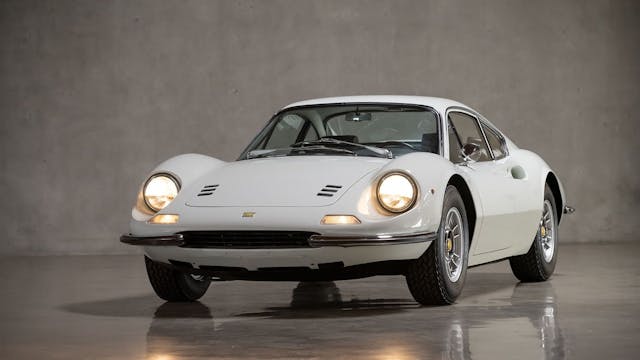
To better understand the newer end of the collector market, we reached out to Harald de Bruijn, who runs Fourwheel Trader, a YouTube channel that specializes in depreciation analysis of sports and supercars that range from new to about 20 years old. He’s laser-focused on evolving prices, and has noticed a split similar to what Tam-Scott mentioned. “When we saw the prices top [in 2022], we also observed that there started to be a divergence in the market. Some cars topped and may have declined a little bit, but their prices remained more or less stable. We saw other cars, many of which were newer, for which prices really started to come down.” In 2023, that drop began to settle somewhat: “We started to see a flattening of the depreciation rates—not completely flat trends—but a return to more normal rates.” He notes that for the cars he tracks, this depreciation rate is now generally in the range of seven to nine percent a year. “That happened quicker than I expected,” he added.
At DriverSource, a collector car dealer in Houston Texas, sales manager Jose Romero reports that “the market has corrected, but it’s hard to assign just how much. Porsche 911s, certain BMWs, certain Ferraris from the ’50s and ’60s all have a smaller audience now, and they take a little longer to sell. But overall, the market is healthy,” he said, adding that he had just sold a Ferrari Dino for a dramatic price.
Spencer Trenery, owner of Fantasy Junction, a collector car dealer in Emeryville, California, adds that trends are not necessarily consistent across segments. For instance, while many sports cars from the ’50s, ’60s, and ’70s have lost value, others are bucking that tide. “275 GTB and GTS Berlinetta Ferraris continue to have upward price adjustments since the beginning of COVID—those cars have advanced quite a bit,” he says.
Stratification
During the last year, the gap between the truly special and cars merely in excellent condition has widened. “Buyers have become more selective, leading to a broader stratification in the market based on quality and provenance,” says Trenery. “More common cars are struggling.”
Romero agrees. “A great car, one with a solid history and unique specification, no miles, and either fully restored or totally original, has only increased in value,” he says. “Take the same car, but in average condition or an average color, or maybe it’s been at three or four auctions in the last ten years, and it’s worth dramatically less.” He also observed that run-of-the-mill cars can take longer to sell, and are more likely to require a price break to move off the showroom floor.
An ongoing evolution in what’s hot
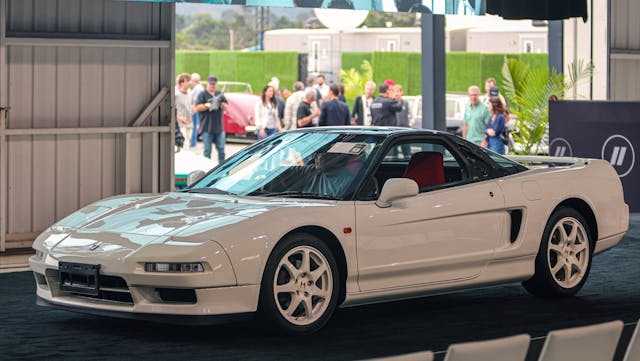
Ascendant ’80s through 2000s supercars feature prominently in our discussions. “We’ve seen early Mercedes AMG, Lamborghini Diablos and Countaches, and Ferraris from the ’80s and ’90s all become the flavors of the month,” says Romero. “That’s what people are craving—as well as Porsches from the 2000s, and anything considered analog. On the other hand, cars that aren’t as user-friendly, like those from the ’50s and ’60s, have suffered.”
User-friendliness is also a common theme, and one that Trenery highlighted in a prominent relative newcomer segment among cars he sells: “We previously sold sports cars and European cars almost exclusively, but American restomods have quickly earned a place. These cars don’t rely on their historic background [for their value] and are returning a higher percentage of the cost to build them,” he says. “People don’t want to drive a drum brake, four-speed car anymore. These cars look like what buyers remember, but have air conditioning, later-model seats, and a reliable crate engine—all things the buying population puts a lot of value on.”

Certain cars in particular are forging their own paths. Tam-Scott and Trenery both picked out the declining values of the Jaguar E-Type as a bit of a head-scratcher, especially in context of some of its contemporaries. “I would chalk this up to generational shift, but Gullwings are strong and E-Types are not,” says Tam-Scott.
Substitution models—cars that saw a significant rise in popularity, and corresponding bump in value due at least in part to other, more desirable models getting out of reach—remain a popular choice. De Bruijn has noted that some cars, like the 996-generation Porsche 911, saw values go up significantly in 2021, and have only receded slightly since then. Trenery similarly points out 996- and 997-generation 911s, along with the Ferrari 308 GT4 as another model that’s quietly crept into collector status.
The impact of expensive money
“Increased rates haven’t been an issue since most clients are cash buyers,”says Tam-Scott, “but more costly financing has had some impact on online auctions, and it’s driven speculation from the market.” This sentiment was shared by the others—though interest rates increased 11 times over the course of 2022 and 2023, very few buyers of $100k-up cars look to banks for financing. As a result, it’s the less expensive cars, and perhaps most interestingly, the top of the market that are most effected.
“For me, the biggest surprise, which makes sense in hindsight,” says Ahn, “compared to prior cycles, was how much the high end of the market softened compared to the sub-$250K segment during the second half of 2023. We were trying to sell an $8M car over the summer to a client, who ultimately decided not to pursue. His rationale was that he could put the $8M to work in money market or short-term treasuries and earn $400K in annual interest, with the principal backed by the U.S. government. It’s hard to argue with that rationale, especially if rates remain high.”
Changing demographics are showing up in transaction behavior
Though generational change in the collector market has been a hot topic for a while, 2023 offered evidence that this shift is beginning to snowball. “We sold 185 cars this year,” says Romero, “and of those, 112 were to new clients. Their average age was 52—much younger than in the past.” Trenery shares that in his experience, baby boomers, while still very active in the market, were more likely to be on the seller side of the equation.
These anecdotes feed into evolving buying and selling trends. Those interviewed affirm that online consignments have offered a healthy amount of throughput. Says Trenery: “We’ve had more first-time clients under 50 years old this year, and they’ve primarily come through our auctions on Bring a Trailer and online transaction forums. They’re typically professionals who don’t desire to travel to buy a car. The model of purchase that appeals to them is one where they can absorb information online over the course of the auction, then block out an hour where the auction is closing to complete the transaction. It’s less personal than it once was.”
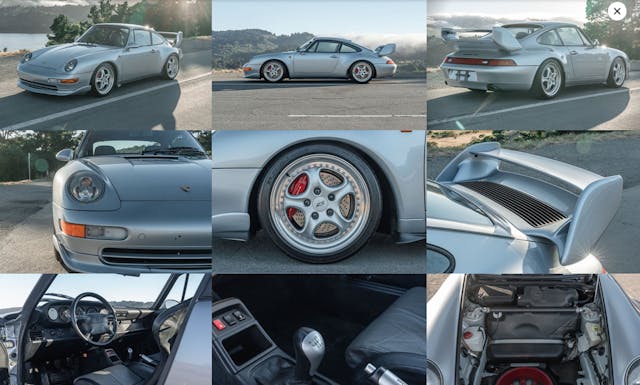
Romero rounds out the other side of the same coin: with buyer preferences that are increasingly remote and visual, it’s often easier to consign a car than for sellers to do it on their own. “They could do it themselves, but in the current market, you need a strong social media presence, 300 photos, and videos, so they look to folks like us who have an established reputation to get the best value.”
Maturing competition between marketplaces
The meteoric growth of online auctions has often prompted questions about the degree to which they are a threat to in-person auctions. Ahn, who oversees Broad Arrow Group’s live auctions as well as Hagerty Marketplace’s online listings, shares that as their coexistence has matured and stabilized, the two have begun to carve out clear identities.
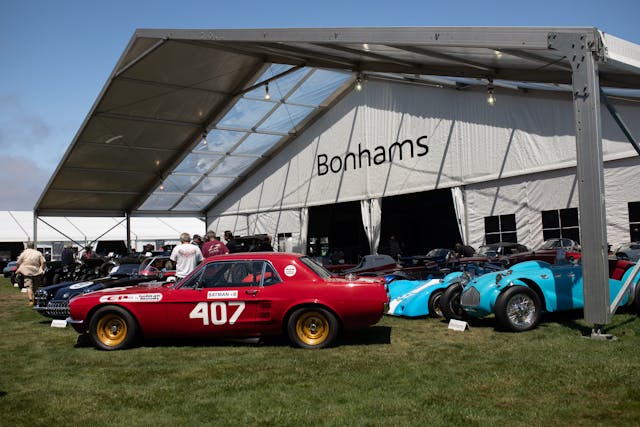
“Both are growing and both matter,” says Ahn. “We’re seeing that more lower price-point, less unique/desirable cars are increasingly finding their way to online auctions, while on average, higher-valued cars are making their way to live auctions. That makes sense not only from a unit economics standpoint, but also when you think about the business model. For example, on the Monterey Peninsula in August, you’ll probably have the world’s greatest concentration of potential buyers of the Ferrari F50 and 250 TdF, Talbot Lago, and Duesenberg within a 15 mile radius over five days. An online auction platform would have hundreds of thousands if not millions of audience, but not the concentration of buyers. In contrast, if you have a 65K-mile, mechanically sound, beautifully-detailed BMW E39 M5 like I have, it will likely not make it onto a catalogue for a live auction in Monterey, but it will surely draw dozens of bidders online.”
Ahn also notes increased collector car supply at auctions, something that Romero has also observed, particularly when watching online sales. “Over the last six months the online market became a lot more saturated,” says Romero. “Online listings are a third higher if not more in total quantity, and the amount of auction watchers has shrunk, in my observation.” Ultimately, this has contributed to downward price influences on more common cars.
Going forward
When it came to looking forward to 2024, our discussions veer toward reminders of the market’s cyclical nature, and the opportunity that exists in a collector world that’s in a very different part of the cycle from 18 months ago.
De Bruijn reminds us that precision is critical: “It’s important to not think of the market as a homogeneous group,” he says. “Different segments in the market have different price trends. Stating that the market is crashing almost never holds unless there’s a big, broader economic crisis.” He’s somewhat optimistic about the future of newer collector cars in the U.S. market, as well: “Based on the data, the biggest drop is behind us. Of course, I cannot look into the future, but price decreases are not accelerating.”
Beyond the numbers, Tam-Scott is mindful of how times like these can facilitate fresh experiences for enthusiasts. “A hot market makes accessibility difficult,” he says. “A flat market enables buyers move more freely between cars—you won’t necessarily get priced out of a quickly-appreciating car. The hobby part of it returns.”
Ahn agrees. “An exceptionally hot market can be worrisome—it rewards more irrational behaviors, more people believe they are astute investors in cars, and some borrow to get cars that are no longer attainable—all things that could lead to a drastic turn,” he says. “A flattening market can bring more rationality. Remember, it’s a highly cyclical industry. Each year, more new cars are added to the ‘collector’ segment than are destroyed, and more collectors appear to be entering the hobby. When I think about the long-term future of the hobby and the industry, I am very optimistic.”
***
Check out the Hagerty Media homepage so you don’t miss a single story, or better yet, bookmark it. To get our best stories delivered right to your inbox, subscribe to our newsletters.
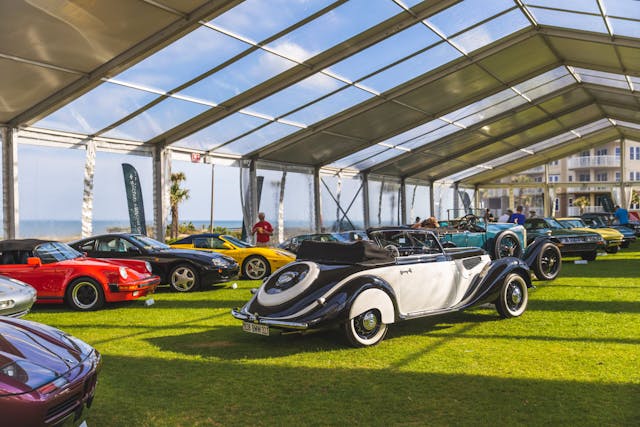


In a strange ,peculiar, read between the lines, way the changing demographic seems to speak more to a different attitude then a generational change. It reminds me of people who thought the best thing to do was ” Adopt A Pet ” and then found out the purebred pedigree they desired..needed… couldn’t be had by just a couple of clicks on their keyboard after an hour or two.